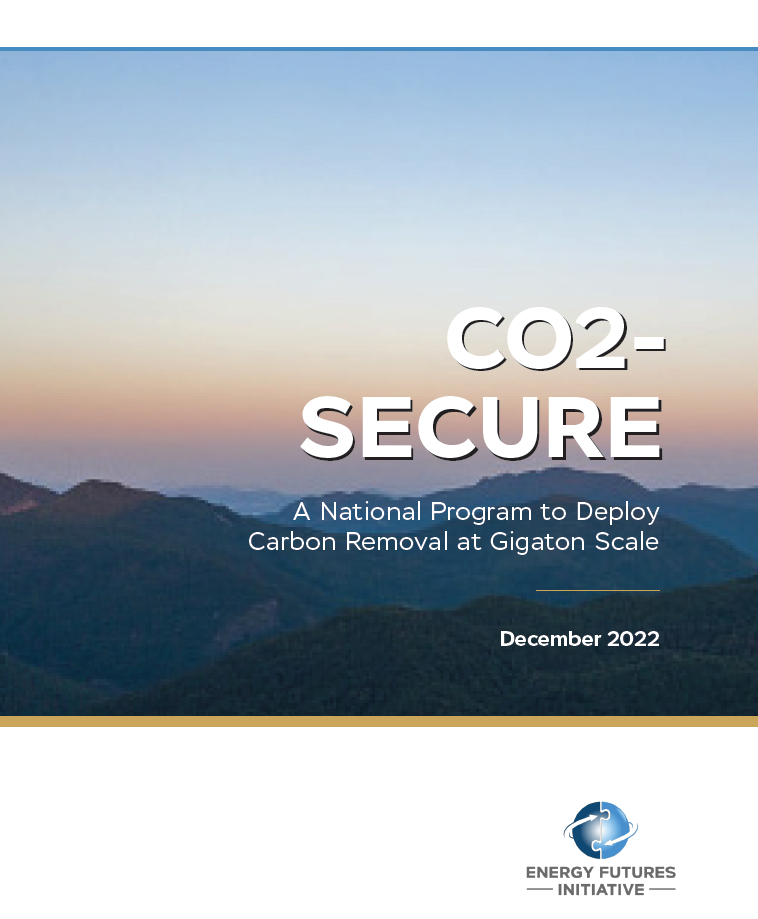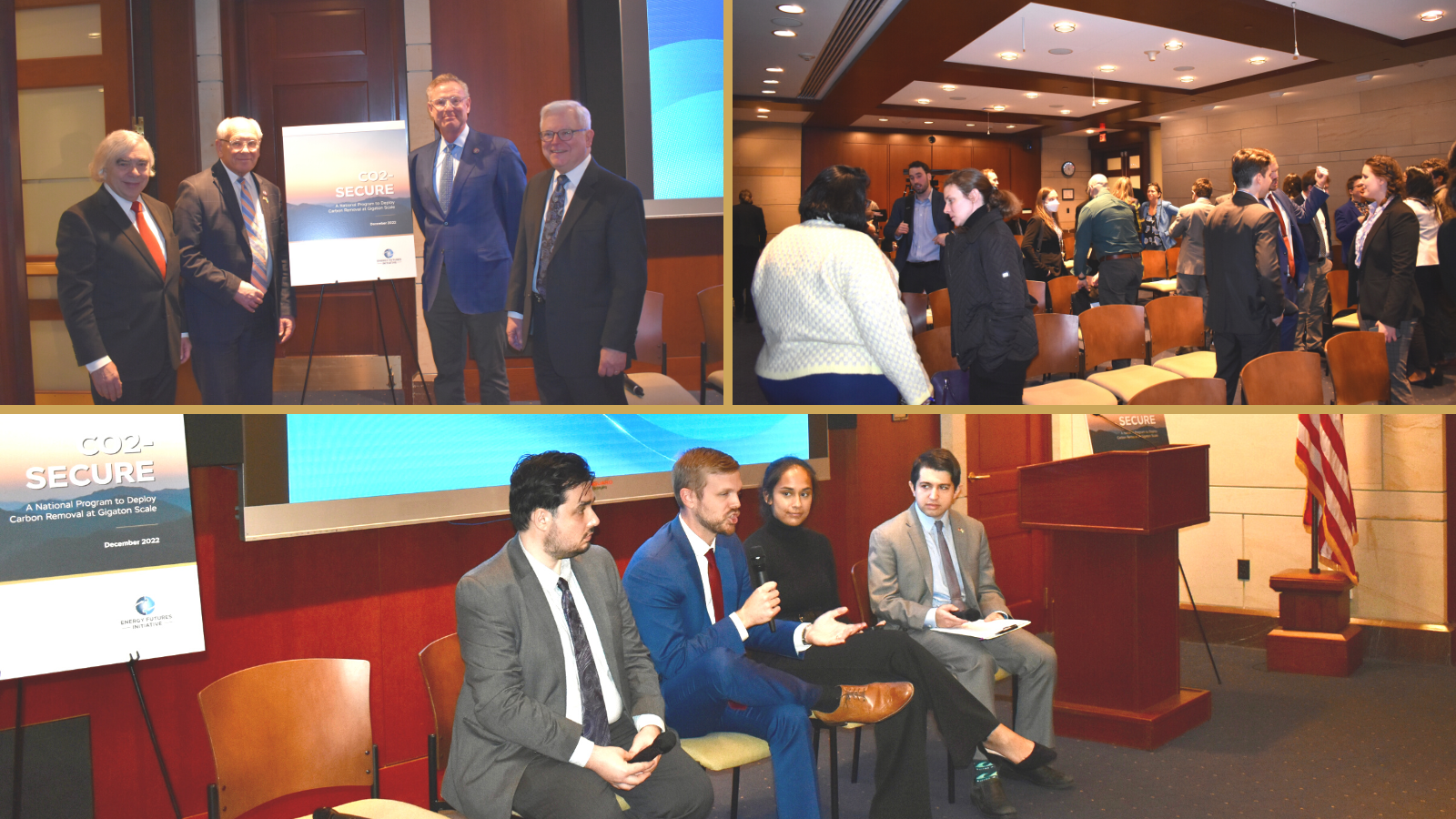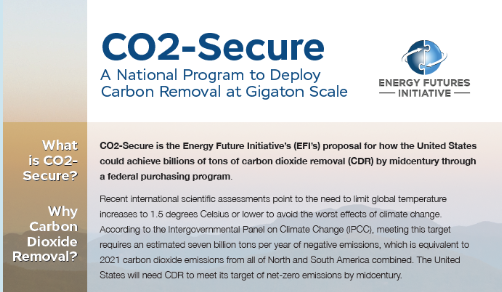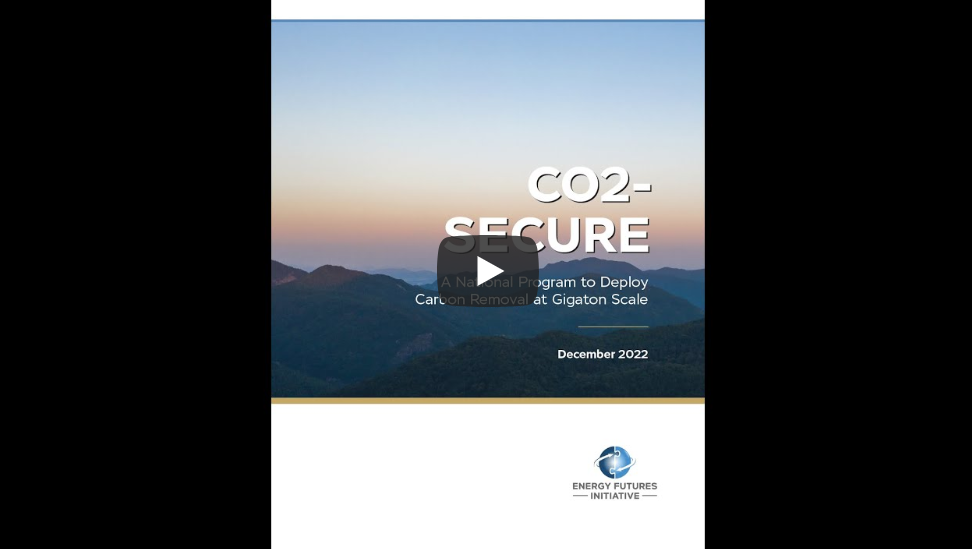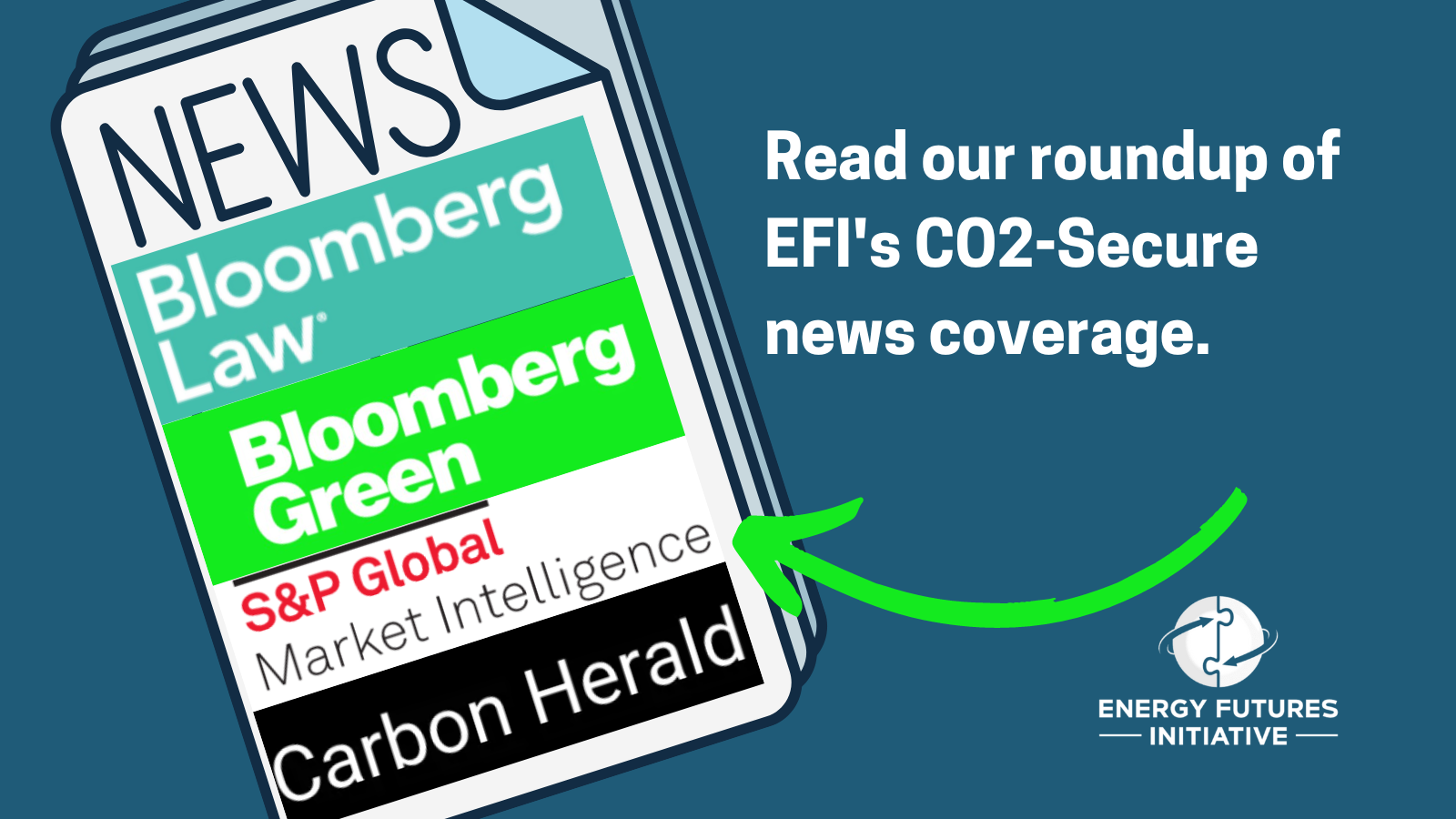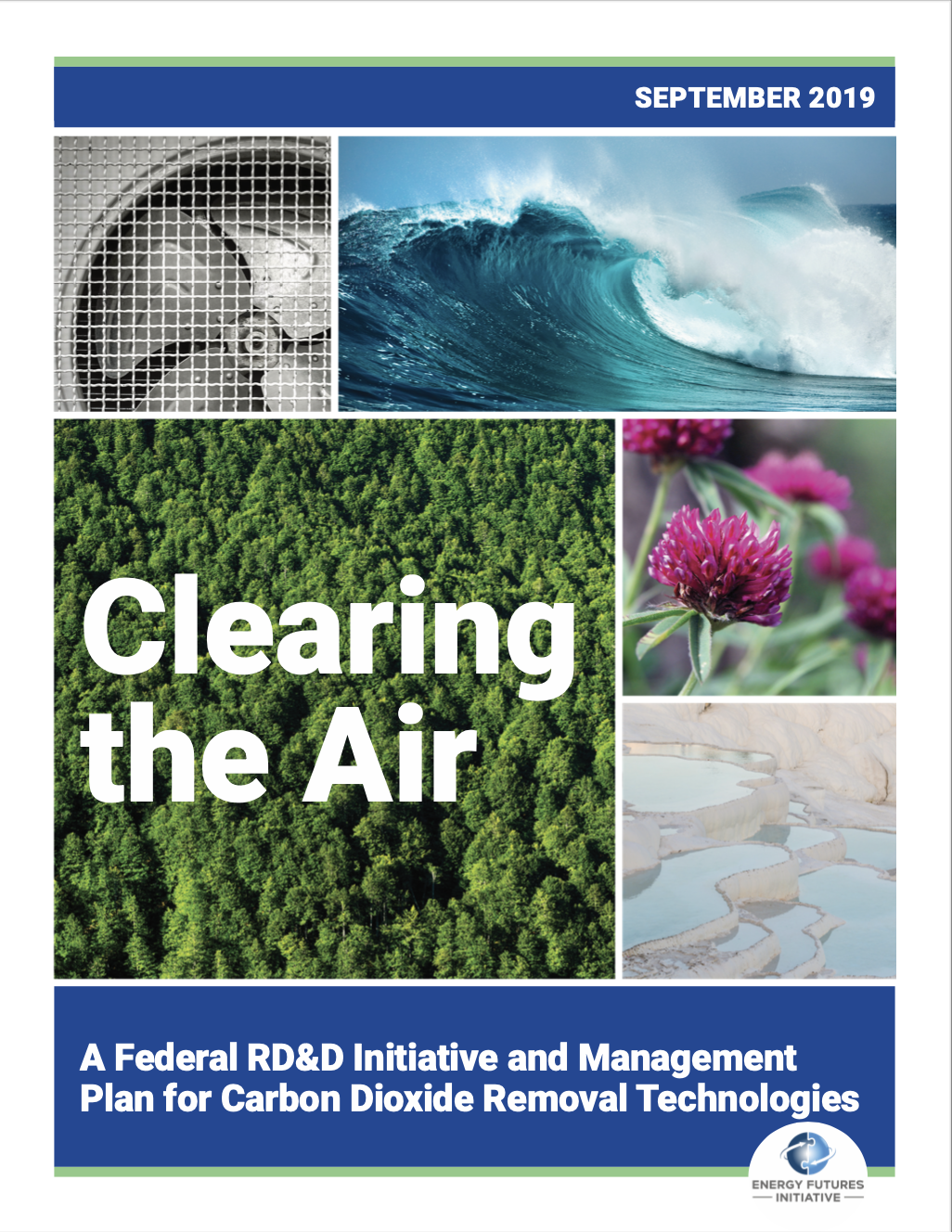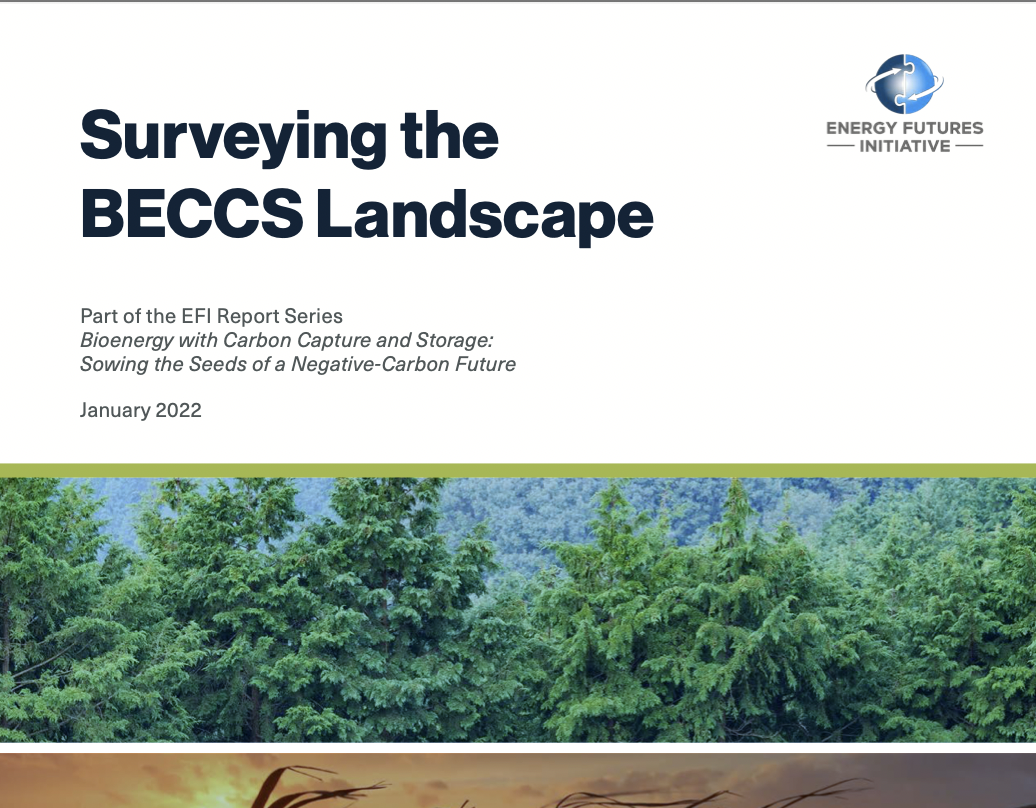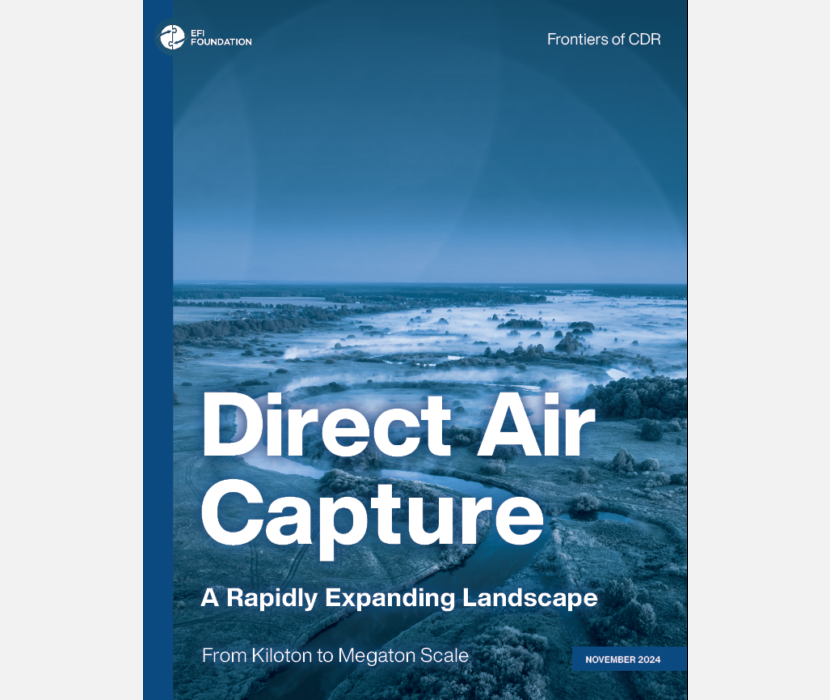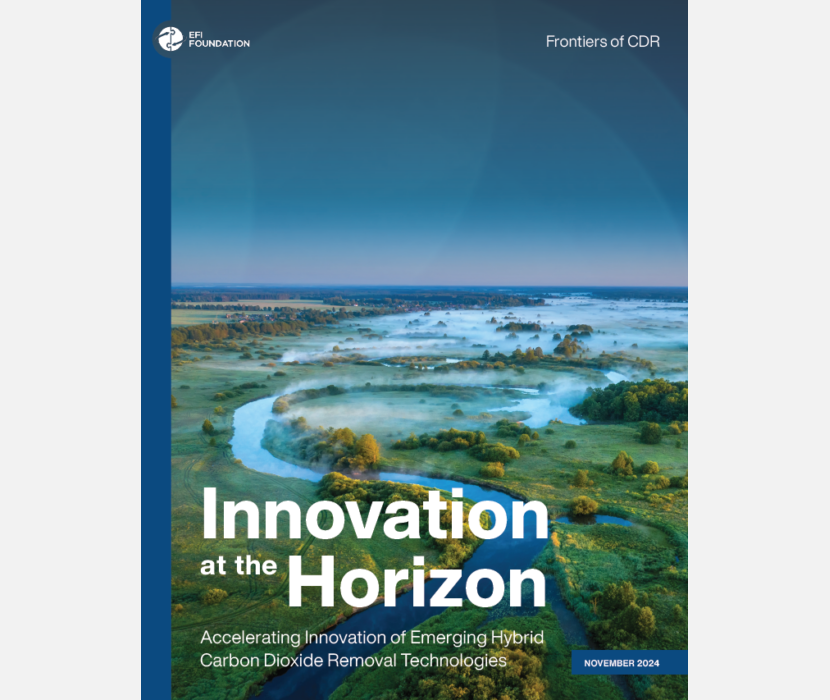Watch the video of our December 8 event: https://www.youtube.com/watch?v=Wd6FzzuJBnw
CO2-Secure: A National Program to Deploy Carbon Removal at Gigaton Scale (December 2022) outlines a proposed new initiative (CO2-Secure) for climate remediation through large-scale carbon dioxide removal (CDR). The program would contribute to net-zero greenhouse gas emissions by midcentury and ultimately to net-negative emissions. Its goal is to achieve billions of tons of carbon removal by the United States by midcentury, well beyond implementation of current CDR policies and programs.
Based on Intergovernmental Panel on Climate Change models, which explore different pathways to reach climate targets, the world will need a median of seven billion tons per year of negative emissions. In recent years, the federal government and private sector have increased funding for CDR technology development, and major companies have announced voluntary corporate goals to reach net-zero and offset legacy emissions through CDR. These advancements, however, would only deliver a fraction of the carbon removals needed, leading us to negative emissions on the order of thousands to millions of tons.
To reach billions of tons, the Energy Futures Initiative (EFI) proposes that public sector investment back CDR deployment. A livable climate is a public good that benefits everyone—just like education or national defense. Its value is not easily captured in dollars and cents, requiring the government to step in to pay for it. Unlike many other climate technologies, CDR does not usually produce energy or other products that can subsidize its cost; its value is purely its contribution to that public good.
Climate stakeholders have previously discussed the idea of a federal carbon purchasing program. EFI’s study adds to that discussion by specifying how a long-term program could be implemented. CO2-Secure is proposed to begin in 2035 as a follow-on to a pilot precursor program in the U.S. Department of Energy such as those proposed in the Federal Carbon Dioxide Removal Leadership Act (S.4280, H.R.7434) or Carbon Removal and Emissions Storage Technologies Act (S.4420, H.R. 9318). Rather than assigning the new program to the U.S. Department of Energy, EFI recommends establishing a new government entity called the National Carbon Removal Authority (NCRA), which would have the mission, authority, and funding to secure carbon dioxide removal.
This report provides recommendations to policymakers for designing the CO2-Secure program, including options for funding mechanisms, eligible technologies, and the degree of public-private collaboration. EFI analyzed more than a dozen existing state and federal programs to create these recommendations. EFI’s research examines programs that are both environment-related (e.g., the Land and Water Conservation Fund) and not (e.g., Fannie Mae) to learn from their strengths, weaknesses, innovations, and long-term stability.
CO2-Secure would be a federal purchasing program, in which the government would pay for the entire cost (subject to restrictions such as price caps) of carbon removal. The reliance on the government’s purchasing power distinguishes it from the federal government’s current policy tools for supporting CDR development. CO2-Secure would have the flexibility to encompass a range of government mechanisms to secure large-scale CDR, such as purchasing CDR services provided by the private sector to establish government-owned and -operated infrastructure.
The initial phase of the program could be provided as a lump sum direct spending authority of $33.2 billion for a 10-year period. The 10 years would provide sufficient time for CO2-Secure to gain experience with large-scale implementation of CDR, explore alternative business models, and facilitate innovation to drive down the cost of CDR. Congress would reauthorize funding for subsequent years based on this experience and account for climate science assessments at that time.
Creating large, firm demand for CDR by positioning the federal government as a buyer of CDR goods and services would provide financial certainty to infrastructure developers. It would also create a market pull, spurring innovation and cost declines. The design framework for CO2-Secure could also facilitate resolution of issues around greenhouse gas accounting and long-term liability for carbon storage, safeguard against unintended environmental and social consequences, and maximize job creation and other co-benefits. CDR deployment in the United States serves the dual purpose of contributing to global emissions goals and spearheading the CDR innovation push.
EFI intends the launch of this report to start a conversation on potential federal CDR programs. We invite you to direct your feedback or questions to Tim Steeves (tmsteeves@energyfuturesinitiative.org) and Sam Savitz (sfsavitz@energyfuturesinitiative.org).
Supplemental Material
Related Content
(Share this post with others.)


